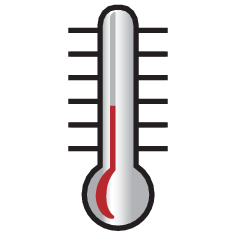Sealing rings

The sealing rings:
- are of a single lip or double lip design
➤ Figure, ➤ Figure, ➤ Figure - are used as contact type sealing elements for sealing of the bearing position in the adjacent construction ➤ Figure
- are also suitable as wipers where purely axial motion is present
- protect the bearings against contamination, spray water and the loss of grease
- are resistant to undoped lubricants with a mineral oil base
- allow circumferential speeds at the seal lip of up to 10 m/s, depending on the surface quality of the shaft
- are matched to the radial dimensions of Schaeffler drawn cup needle roller bearings and needle roller bearings ➤ Figure
- are easy to fit, since they are simply pressed into the housing bore.
Product design
Design variants
Sealing rings are available as:
Sealing of the bearing position has a decisive influence on the function and operating life of a bearing
The quality of a bearing arrangement is decisively influenced by the components – shaft, housing, seal – that are directly adjacent to the bearing. Seals play a decisive role in protecting bearings against contamination. If inadequate seals are used, contaminants can penetrate the bearing or an unacceptably large quantity of lubricant may escape from the bearing. Solid contaminants lead to wear and/or fatigue of the raceways and rolling elements. Bearings that are contaminated or running dry will fail long before they reach their fatigue rating life. In the design of bearing arrangements, the use of the correct seals is therefore decisive in determining the operating life of the bearings and the cost-effectiveness of the bearing arrangement.
Schaeffler sealing rings
G, GR, SD
Schaeffler sealing rings were developed as seals for needle roller bearings and have been available in the market for decades. During this time, they have proved extremely effective in automotive and engine construction as well as machine and equipment building.

Fundamental information on sealing rings and the principles of sealing ring technology as well as examples of applications are given in Technical Product Information TPI 128. This publication can be requested from Schaeffler.
Single lip sealing rings
With external steel reinforcement or rubber encased reinforcing ring
Single lip sealing rings are available in the designs GR and G ➤ Figure, ➤ Figure and ➤ Table. The sealing rings comprise a high quality synthetic NBR elastomer material , which is coloured green. Due to an active filler material, the sealing rings have particularly good resistance to wear and heat.
Sealing rings GR
Sealing rings GR suitable for shaft diameters up to 7 mm as standard and have external steel reinforcement for stiffening purposes ➤ Figure and ➤ Table.
Sealing rings G
Sealing rings G are designed for shaft diameters over 8 mm and have a rubber encased steel reinforcement with a rubber wave profile for stiffening purposes ➤ Figure and ➤ Table. This provides good sealing on the outside diameter. At the same time, it also reduces the forces required for fitting.

The angled reinforcing rings are made from formed sheet steel in accordance with DIN EN 10139.
Double lip sealing rings
With contact lip and non‑contact dust shield
Double lip sealing rings are available in the design SD ➤ Figure and ➤ Table:
- A contact seal lip essentially prevents the escape of lubricant and unpressurised oil from the bearing arrangement.
- A protective lip in contact with the shaft (marked side) also acts as a gap seal against the ingress of contamination.

The space between the seal lip and protective lip must be filled with grease.
Carrier and lip area made from different materials
The sealing rings comprise two plastic components: the carrier is made from glass fibre reinforced polyamide PA66-GF, while the seal lip area is made from thermoplastic PU elastomer (coloured green).
Also suitable as wipers on shaft with axial motion
Sealing rings SD can also be used as wipers on shafts with axial motion. Since these sealing rings are made from a harder and stiffer lip material than the sealing rings G and also have an additional protective lip, they are particularly suitable for axial motions. Stroke velocities up to 3 m/s are possible, depending on the surface quality of the shaft.
Characteristics and areas of application of sealing rings
Criteria | Sealing ring |
|---|
Single lip | Double lip |
|---|
GR | G | SD |
|---|
Resistance |
Mineral oils and greases | Normally resistant | Normally resistant | Normally resistant |
Highly blended,
synthetic lubricants | Conditionally resistant | Conditionally resistant | Conditionally resistant |
Aggressive media | Consultation necessary | Consultation necessary | Not resistant |
Weather |
Light, air | Moderate | Moderate | Good |
Humidity | Good | Good | Good |
Contamination resistance
(lip facing outwards) | Good | Good | Very good |
Application: shaft |
Sealing integrity | Good | Good | Good |
Maximum circumferential velocity | 10 m/s | 10 m/s | 10 m/s |
Application: rod |
Maximum stroke velocity | 3 m/s | 3 m/s | 3 m/s |
Application: housing |
Sealing integrity | Satisfactory | Very good | Good |
Tight fit | Very good | Good | Good |
Press-in force | Medium | Slight | High |
Soft housing material | Conditionally suitable | Highly suitable | Suitable |
High thermal expansion | Conditionally suitable | Suitable | Suitable |
Split housing | Conditionally suitable | Suitable | Conditionally suitable |
Operating behaviour
Normally used with rotating shaft
Sealing rings GR, G and SD are generally used in applications with a rotating shaft.
Static sealing of the housing bore
Sealing action is achieved by means of interference fit on the outside surface
The outside surface of the sealing rings gives static sealing of the housing bore. The sealing action is achieved when the sealing ring is pressed into the housing bore with an interference fit.
The firm seating and sealing action are decisively influenced:
- by the design and accuracy of the housing bore
- by the outside surface of the sealing ring
- by correct fitting of the sealing rings.
Sealing rings G are suitable for fluid media
The rubber encased sealing rings G adapt particularly well to the surface of the housing bore. The application and usage for sealing against fluid media must be validated in each specific case.
Static/dynamic sealing of the shaft
The diameter of the seal lip in the fitted seal is smaller than the shaft diameter. As a result, the seal lip in the unfitted seal has interference of the radial force FR (contact force). The radial force is the sum of all the component forces from the seal edge of the sealing ring that act towards the centre point of the shaft.
Factors influencing the contact force
It is dependent on:
- the deformation values of the seal lip – e. g. compression set, material hardness
- the geometry of the seal lip
- the operating temperature.
Static sealing
With a stationary shaft, the seal integrity is primarily determined by the radial force.
Dynamic sealing
With a rotating shaft, the seal integrity is additionally influenced by:
- the surface of the shaft
- the geometrical and positional tolerances – e. g. coaxiality, runout, perpendicularity
- tribology – lubrication, friction, wear
- the speed
- the temperature
- contamination.
Resistance and leakage
The sealing action is aided by a grease collar
The sealing rings are resistant to undoped lubricants with a mineral oil base. For other media, resistance must be checked. In leakage, the medium escapes from the area to be sealed, especially at the seal edge. Slight leakage cannot be completely prevented with contact seals due to the sealing mechanism (grease or fluid film) even if the sealing ring is fully functional. Leakage can occur in the form of gas or vapour, droplets or drops. In droplet or drop leakage, a thin film of fluid is formed on the shaft. The sealing action is aided by a grease collar.
Sealing on shaft with axial motion
The sealing ring performs a dual function as a wiper
With pure axial motion, the sealing ring acts as a wiper. As in the case of rotating shafts, it performs a dual function here. The sealing element:
- retains the lubricant in the area to be sealed
- prevents contaminants from penetrating the area to be sealed.
The sealing action is dependent on the interference
The interference of the shaft/rod and seal lip diameter determines the sealing action. On the entry stroke of the rod, the sealing ring wipes away the lubricant and contaminant particles. The seal lip slides on the remaining lubricant film. On the counterstroke, lubricant is drawn out through the seal gap. This increases the lubricant film on the rod again.
Friction
Factors influencing the frictional torque
The friction is influenced by:
- the material pair (elastomer/steel)
- the surface of the shaft
- the interference (radial force FR)
- the lubrication of the contact surface
(shaft/seal edge or rod/seal edge).

With a rotating shaft or motion of the rod, the adhesive friction present during standstill is converted to sliding friction. If lubricant is supplied, mixed friction occurs. The frictional power of the sealing rings increases with the diameter and the speed of the shaft. When the shaft starts to move, the frictional torque is higher than in normal operation, especially after a long period of standstill. If there is a lack of lubricant, the seal lip is not lubricated. The displacement forces increase as a result of dry running. Furthermore, the seal lip is damaged.
Wear
Causes of wear
The following type of wear can occur at the seal edge:
- adhesive wear, e. g. if the seal lip sticks to the shaft after a long period of standstill
- if the seal edge slides on the contact surface
- under dry running
- if there are contaminant particles between the seal edge and the contact surface.
The sealing function is impaired by deposits
After an extended running time, deposits may build up on the shaft/seal edge contact surface – e. g. comprising carbon and additive residues. These deposits can influence the sealing function and lead to leakage.
Wear grooves may occur on the shaft, especially if a soft shaft material is used or there is a heavy stream of contaminant particles.
Wear behaviour is influenced by the shaft material
The wear can be reduced by using a hardened shaft material or coated shafts. The abrasion resistance of NBR, FPM and HNBR elastomer is good, while that of TPU is very good.
Storage
Storage location
Sealing rings should be stored in dry, dust-free rooms – at a maximum relative humidity of 65%, moderate ventilation and free from draughts. Observe the storage room requirements in accordance with DIN 7716.
Protect sealing rings from:
- direct sunlight
- UV light
- ozone (e. g. produced by electrical equipment)
- intense thermal radiation.

If these conditions are not maintained, this may cause
unfavourable changes in the physical characteristics of
the sealing rings (e. g. hardening).
Do not remove sealing rings from their original packaging until immediately before fitting.
Maximum storage time
The maximum storage time from manufacture to fitting is:
- 5 years for NBR
- 10 years for FPM/HNBR.
Operating life
Factors influencing the operating life
Physical, chemical and mechanical influences determine the operating life of sealing rings.
These include:
- ageing; the elastomer structure may undergo thermo-oxidative degradation, further crosslinking or embrittlement, depending on the environment and medium
- medium; media (fluids) may be dispersed within the structure or dissolve elastomer components. The elastomer may swell or contract as a result. If several media are affecting the seal at the same time, volume changes can be superimposed on each other and may be difficult to detect by optical means
- temperature; high temperatures and/or aggressive media can accelerate the decomposition and ageing processes
- wear and contamination.
Empirical values for operating life
The interaction of these influences is very complex. As a result, it is not possible to calculate the operating life of sealing rings; only values based on practical experience can be given. Under normal operating conditions, seals can achieve a maximum operating life of:
- 10 000 operating hours in continuous operation or 3 years to 5 years.

The data given in ➤ Table are guide values. They cannot be applied without restriction to all operating conditions. In case of doubt, please consult Schaeffler.
Lubrication
The seal edge must always be lubricated
Sealing rings only function reliably if the seal edge is continually lubricated. Heat is generated at the seal edge. This is mainly dissipated to the shaft by the moving lubricant. Since elastomer gives only poor conduction of heat, heat cracks and wear can occur at the seal edge under inadequate lubrication. With grease lubrication, a grease collar protects the edge from excessive heating.
Temperature range
Excessively high temperatures can lead to loss of integrity at the seal edge
The permissible operating temperature is dependent on the interaction between the medium, the temperature and its effect on the sealing ring material ➤ Table. With increasing circumferential velocity, the temperature at the contact surface increases as a result of the increasing shear forces in the lubricant and the low thermal conductivity of the elastomer. If the temperature of the seal edge increases too much, wear and heat cracks may occur that impair the seal integrity. The suitability of the sealing rings should be checked by tests as extremes of temperature are reached.
Possible operating temperatures of sealing rings ➤ Table .
Permissible temperature ranges
Operating temperature | Sealing rings G and GR
in standard design | Sealing rings SD |
|---|

| –30 °C to +110 °C
depending on the medium acting on the sealing ring | –30 °C to +100 °C
depending on the medium acting on the sealing ring |

In the event of anticipated temperatures which lie outside the stated values, please contact Schaeffler.
Suffixes
Suffixes describe the design and features of a bearing in more detail.
Suffixes and corresponding descriptions
Suffix | Description of suffix |
|---|
FPM | Sealing rings G and GR
for temperatures of –20 °C to +160 °C or
circumferential velocities of up to 16 m/s | Special design, available
by agreement only |
HNBR | Sealing rings G and GR
for temperatures of –30 °C to +140 °C or
circumferential velocities of up to 12 m/s |
Structure of the product designation
With medias interchange, equivalent Schaeffler bearing designations can be determined for bearing designations from other rolling bearing manufacturers http://www.schaeffler.de/std/1B69.
Example of composition of product designation
The designation of sealing rings follows a set model. Example ➤ Figure.
Design of bearing arrangements
Design of housing bore
The fit has a considerable influence on the seating of sealing rings
For a tight fit of the sealing rings in the housing bore, the values should be in accordance with ➤ Table. If the housing and sealing ring materials have considerably different coefficients of thermal expansion, the tight fit of the sealing ring may change under hot or cold conditions.
Chamfers on the housing bore
The housing bore should be chamfered in order to protect the sealing ring during fitting ➤ Figure and ➤ Table. The remaining seating length must be at least the nominal width of the sealing rings.

The design of the chamfer on the housing bore should be in accordance with the data in DIN 3760.
Chamfer dimensions
Chamfer | D ≦ 30 mm | D > 30 mm | d ≦ 30 mm | d > 30 mm |
|---|
vmin | 0,3 | 1% of D | ‒ | ‒ |
wmin | ‒ | ‒ | 0,3 | 0,5 |
Design of shaft
The surface hardness of the seal running surfaces should be ≧ 55 HRC
For a tight fit of the sealing rings on the shaft and seal running surfaces proven in practice, the values should be in accordance with ➤ Table. Where there are special requirements for sealing integrity, the values must be adjusted as necessary. Hard contaminant particles on the seal can lead to wear of the seal running surface. For this reason, only materials with a hardness of ≧ 55 HRC can be recommended for use as a seal running surface ➤ Table. The steels normally used in machine building are suitable. The sliding surface for the seal lips must not have any surface imperfections in accordance with ISO 8785. The design of seal running surfaces in accordance with the requirements in DIN 3760 is recommended.
Hardened and ground bearing rings used as raceway
For bearing positions with heavy contamination impact, the use of hardened rings ground free from spiral marks – such as inner rings LR – as a raceway for the seal lip is advisable, since these can be replaced if wear occurs ➤ Figure.

If increased wear is expected, the running surface can be coated. In this case, please consult Schaeffler.

In order to protect the seal lips during fitting, the ends of shafts should be chamfered in accordance with DIN 3760 ➤ Figure and ➤ Table.
Design of the shaft and housing bore
Sealing ring | Motion
of shaft | Tolerance class of bore | Shaft |
|---|
Tolerance class | Roughness | Hardness |
|---|
G, GR, SD | Rotation only | G7 Ⓔ to R7 Ⓔ | g7 Ⓔ to k7 Ⓔ | 0,2 ≦ Ramax ≦ 0,8 | 55 HRC or 600 HV |
SD | Axial motion | Ramax 0,3 |
Mounting and dismounting

Sealing rings must be handled and fitted correctly. This is the only way to ensure that they fulfil their sealing function correctly for a long period without problems.
Sealing lip orientation
Pay attention to the orientation of the seal lip:
- A seal lip facing outwards protects the bearing against the ingress of dust and contamination ➤ Figure.
- A seal lip facing inwards prevents the egress of lubricant from the bearing ➤ Figure.
Sealing rings SD
In the case of sealing rings SD, the side with the protective lip is the marked side. If it should be relubricated from inside, the protective lip must face outwards.
Mounting guidelines
The running surface on the shaft and seal lip must be oiled or greased. This reduces the frictional energy during initial movement. In the case of sealing rings with an elastomer encased reinforcing ring – sealing ring G – the outside surface should be oiled before pressing in. This makes it easier to fit the seal in the housing.
Fitting tools
Press sealing rings carefully into the housing bore using a pressing device and a suitable pressing tool ➤ Figure and ➤ Figure.

Ensure that the seal lip is not damaged. Cover any sharp-edged shaft ends, slots, teeth or threads by means of fitting sleeves. Fit sealing rings in such a way that the pressing-in force is applied as close as possible to the outside diameter.
Pay attention to the perpendicular orientation of sealing rings
Fit sealing rings perpendicular to the shaft axis and the housing bore. Do not exceed the maximum deviation in perpendicularity between the sealing ring and the shaft axis once fitted ➤ Table. Larger deviations will influence the sealing action.
Maximum perpendicularity deviation
Shaft diameter d | Maximum deviation |
|---|
mm | mm |
|---|
d < 25 | 0,1 |
d ≧ 25 | 0,2 |
Sealing ring SD
In the case of sealing rings SD, the space between the seal lip and protective lip must be filled with grease.
Checking of function
After fitting, allow the sealing rings to run in and check the sealing function. Slight leakage (forming a grease or liquid film) is desirable in order to lubricate the contact surface for the seal lips. The sealing action is aided by a grease collar.
Relubrication
During relubrication, increase the pressure only slowly.
Legal notice regarding data freshness
The further development of products may also result in technical changes to catalogue products
Of central interest to Schaeffler is the further development and optimisation of its products and the satisfaction of its customers. In order that you, as the customer, can keep yourself optimally informed about the progress that is being made here and with regard to the current technical status of the products, we publish any product changes which differ from the printed version in our electronic product catalogue.

We therefore reserve the right to make changes to the data and illustrations in this catalogue. This catalogue reflects the status at the time of printing. More recent publications released by us (as printed or digital media) will automatically precede this catalogue if they involve the same subject. Therefore, please always use our electronic product catalogue to check whether more up-to-date information or modification notices exist for your desired product.


















